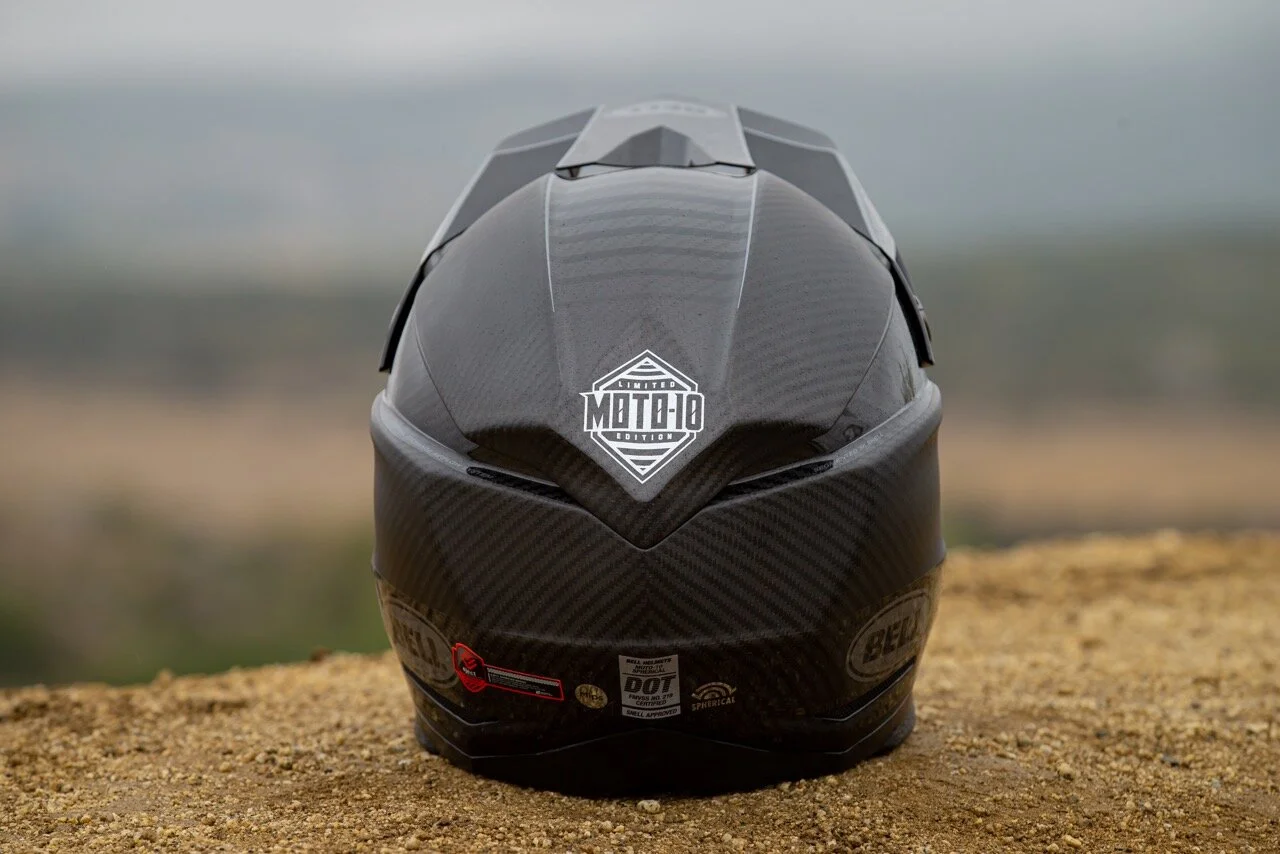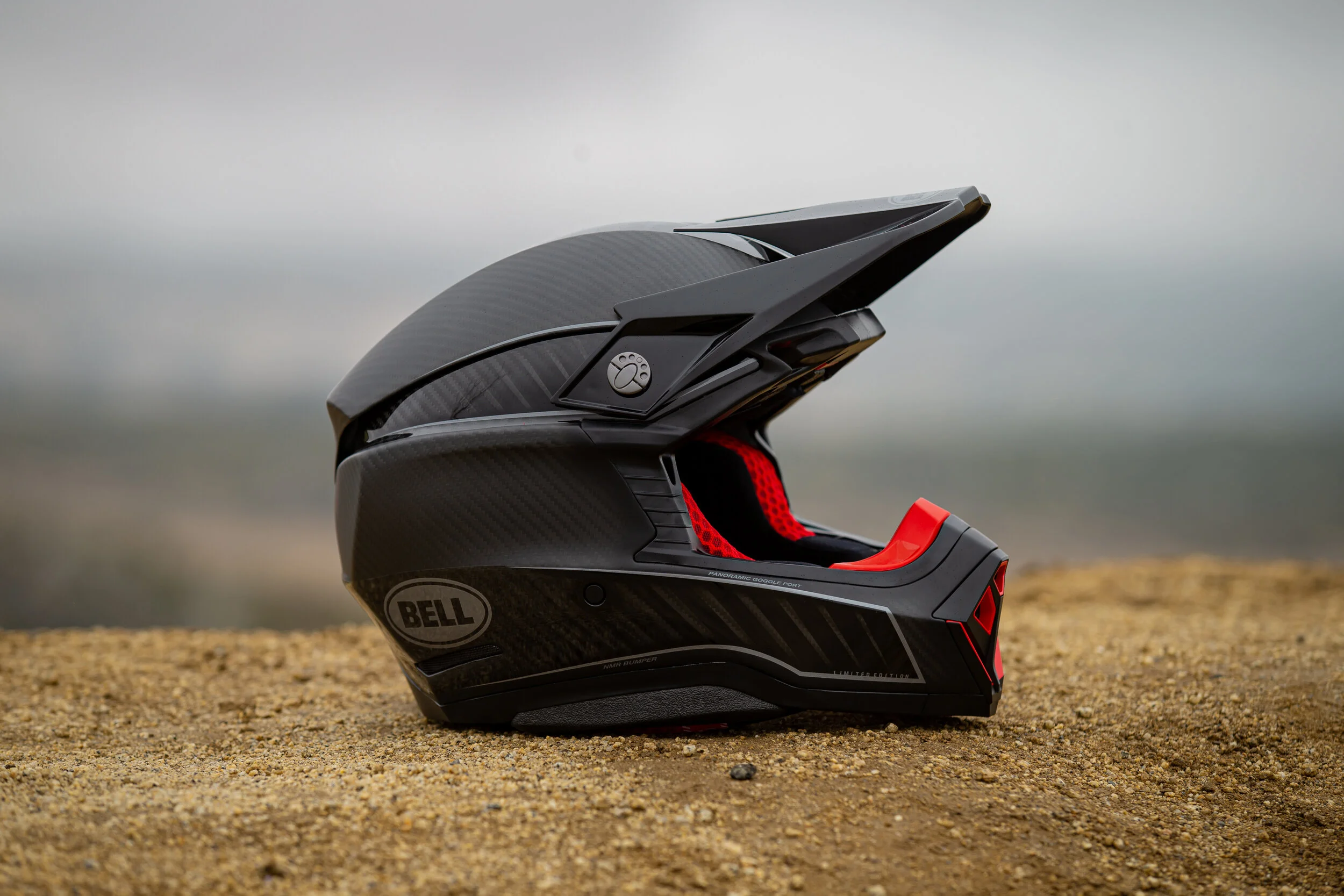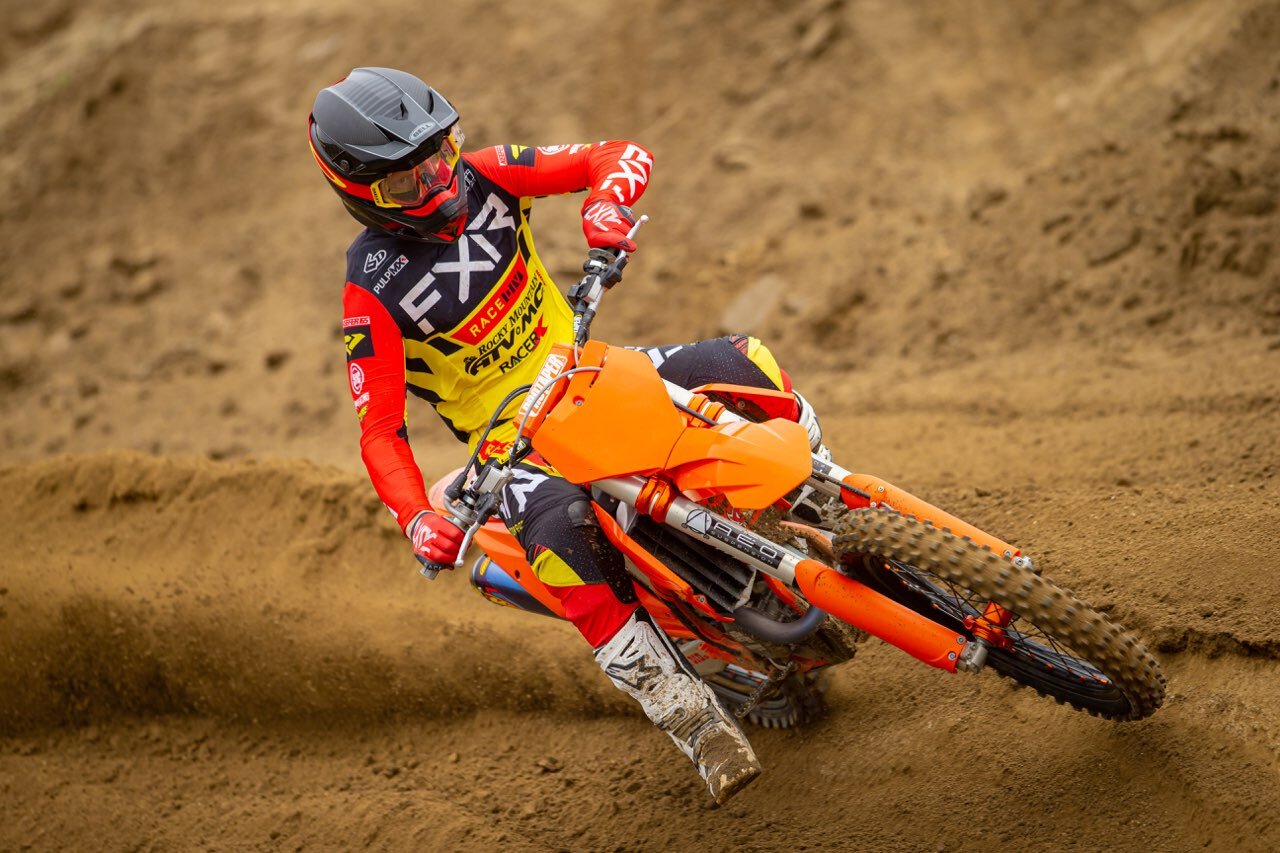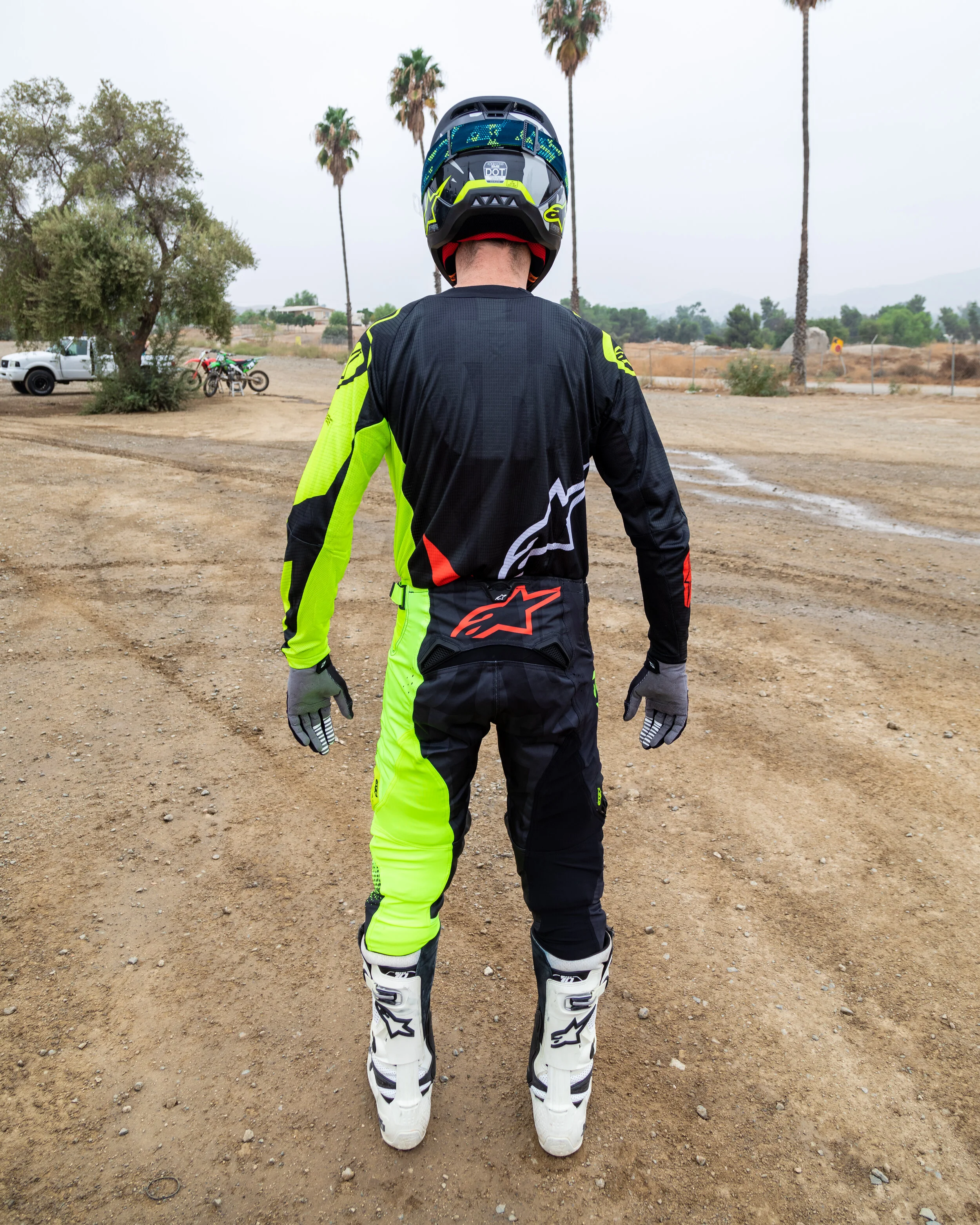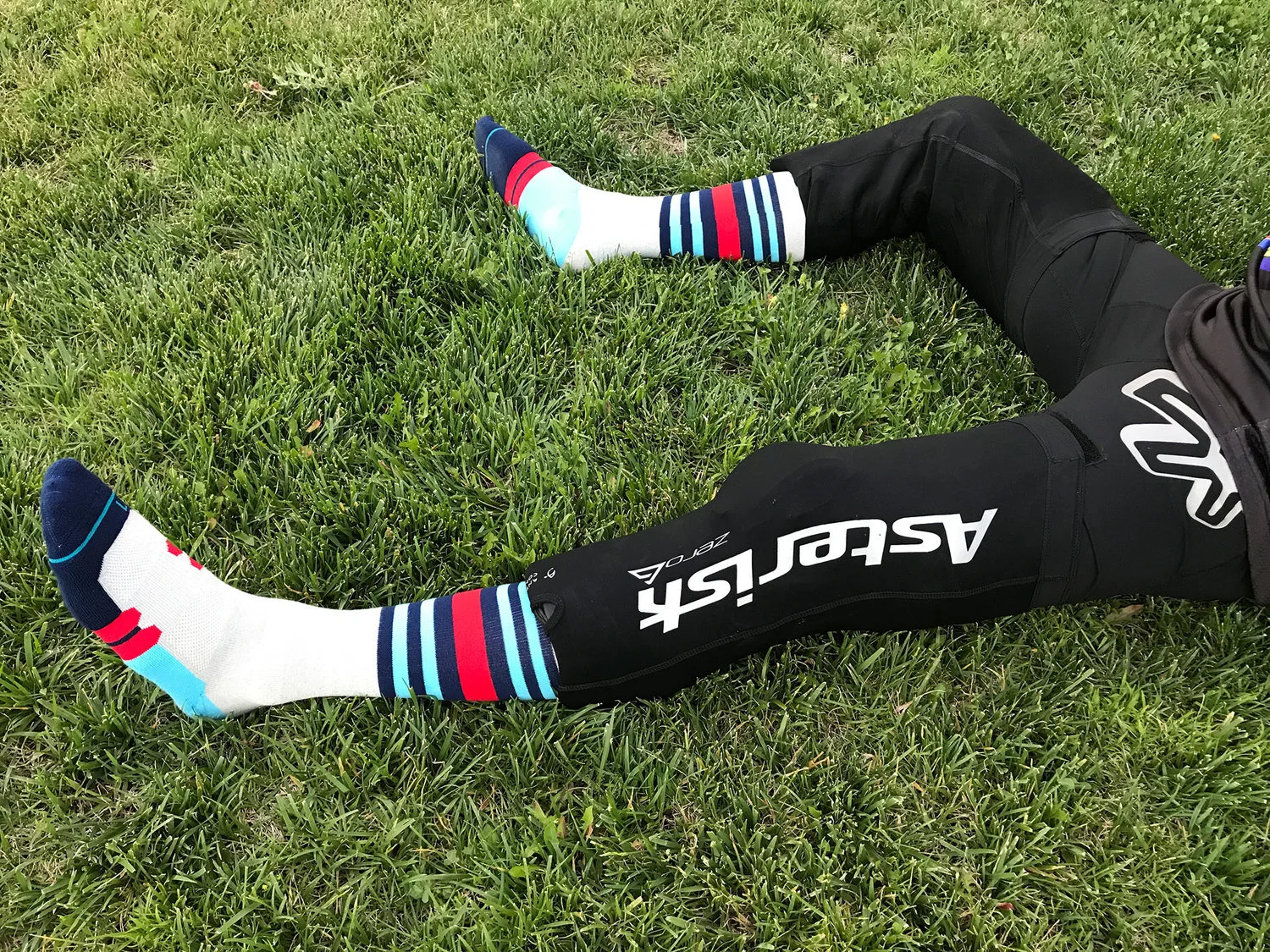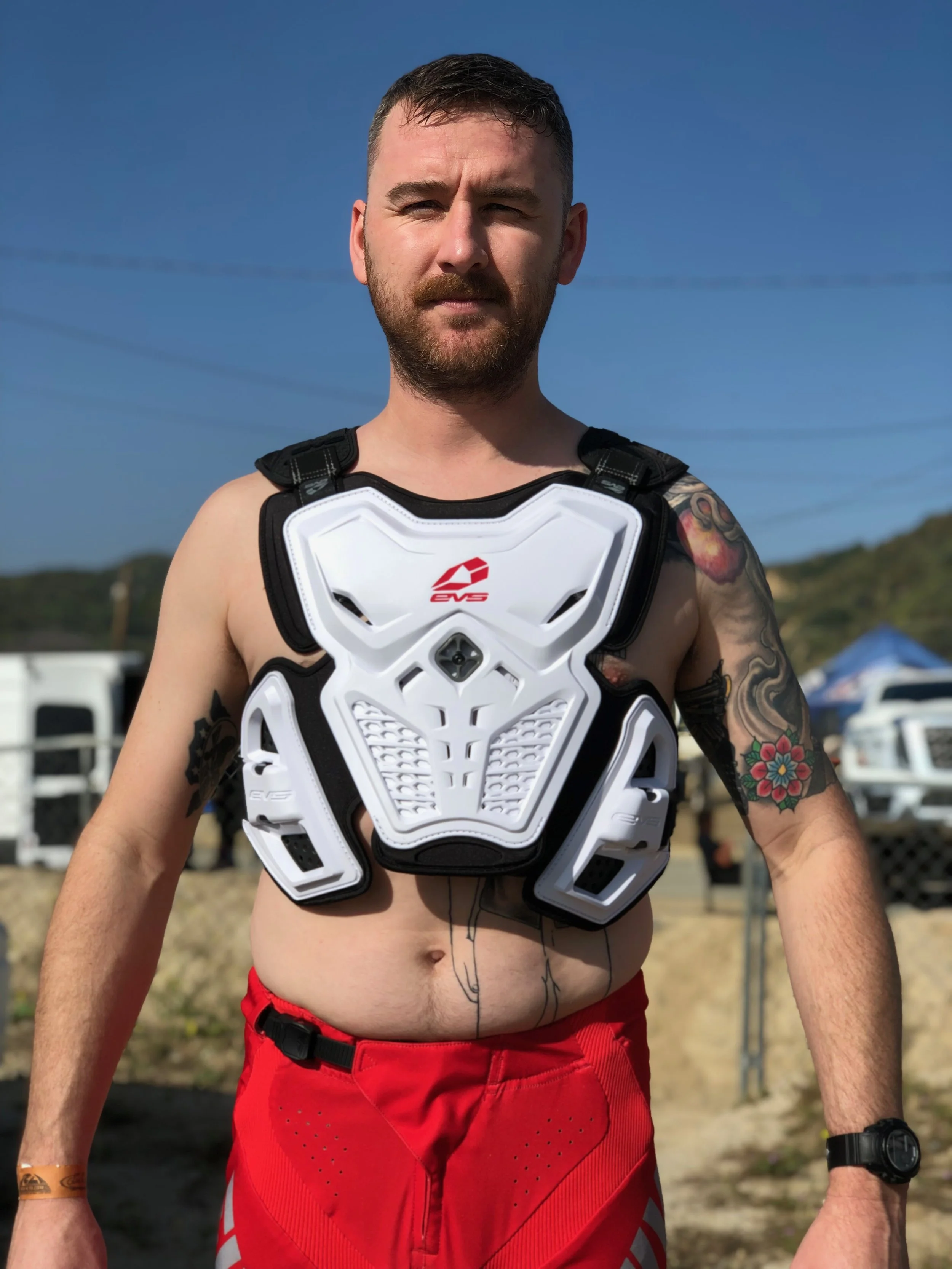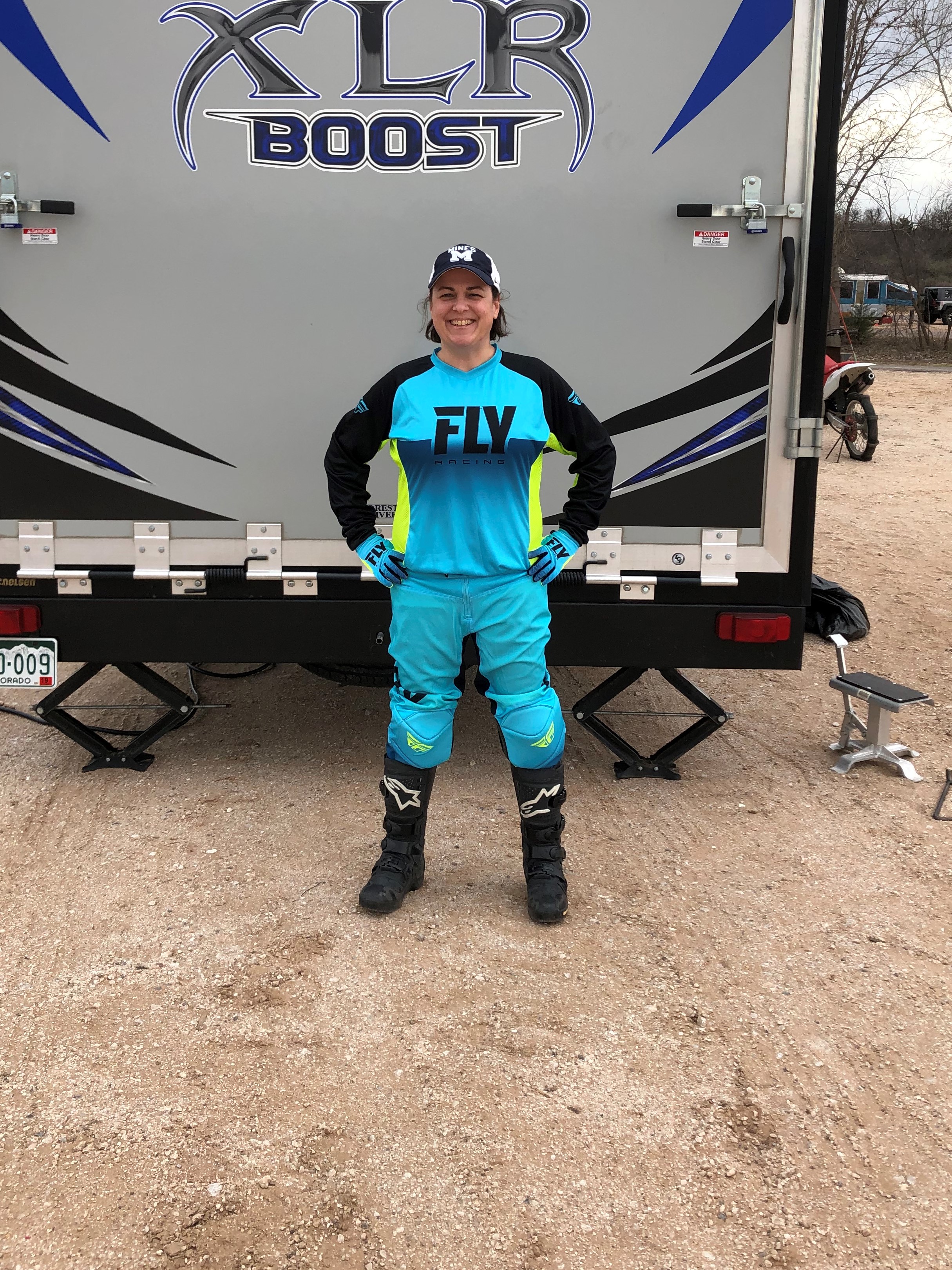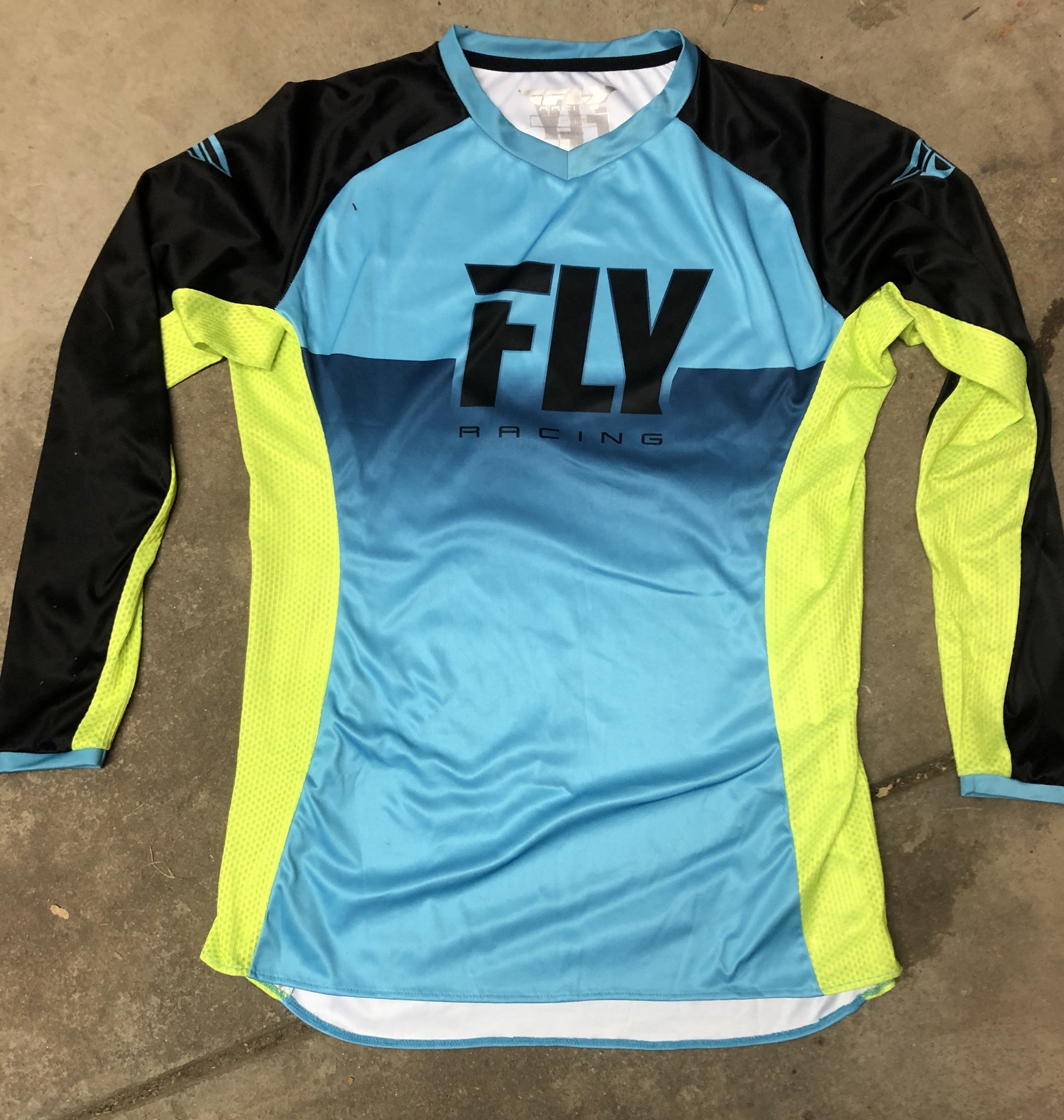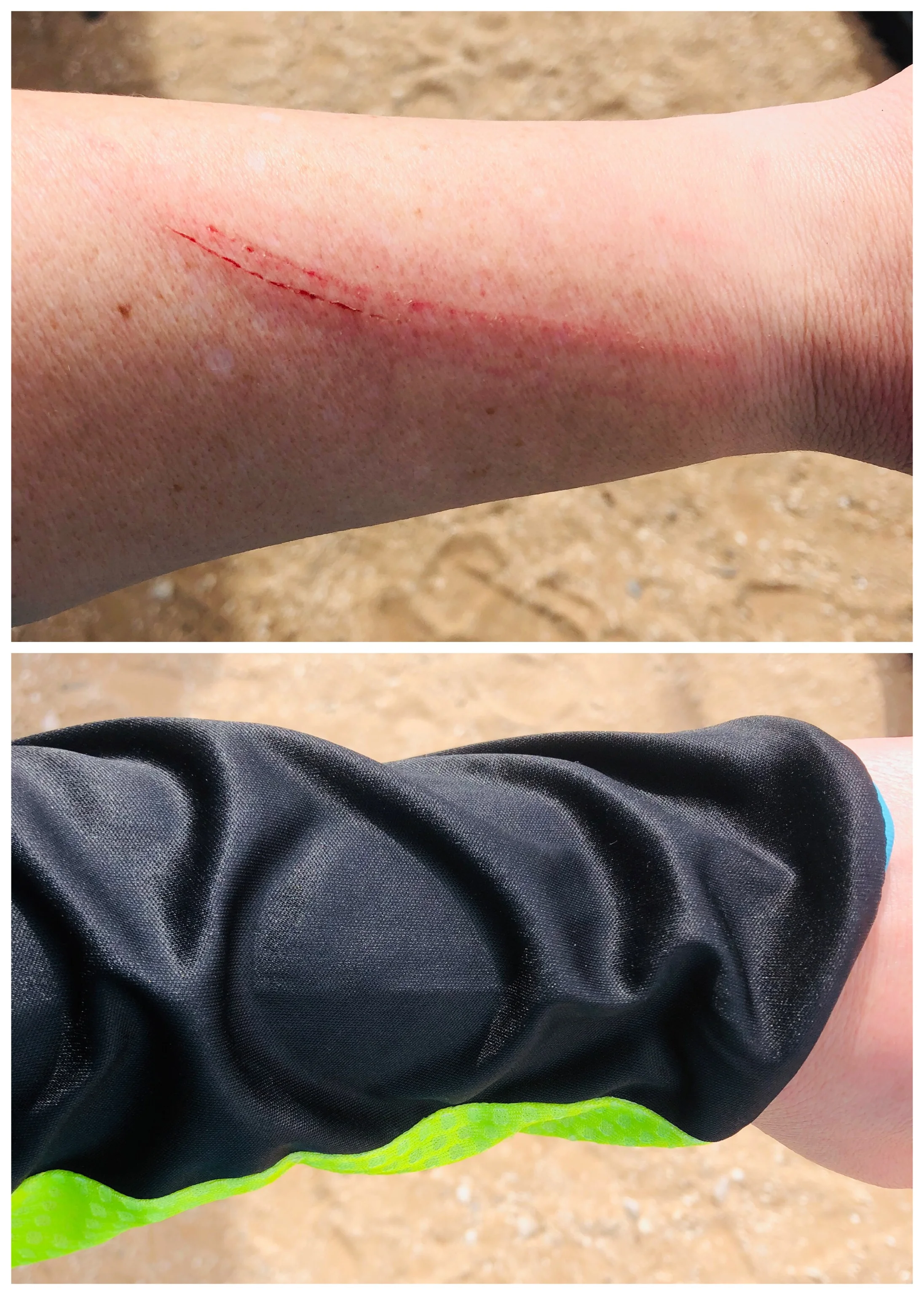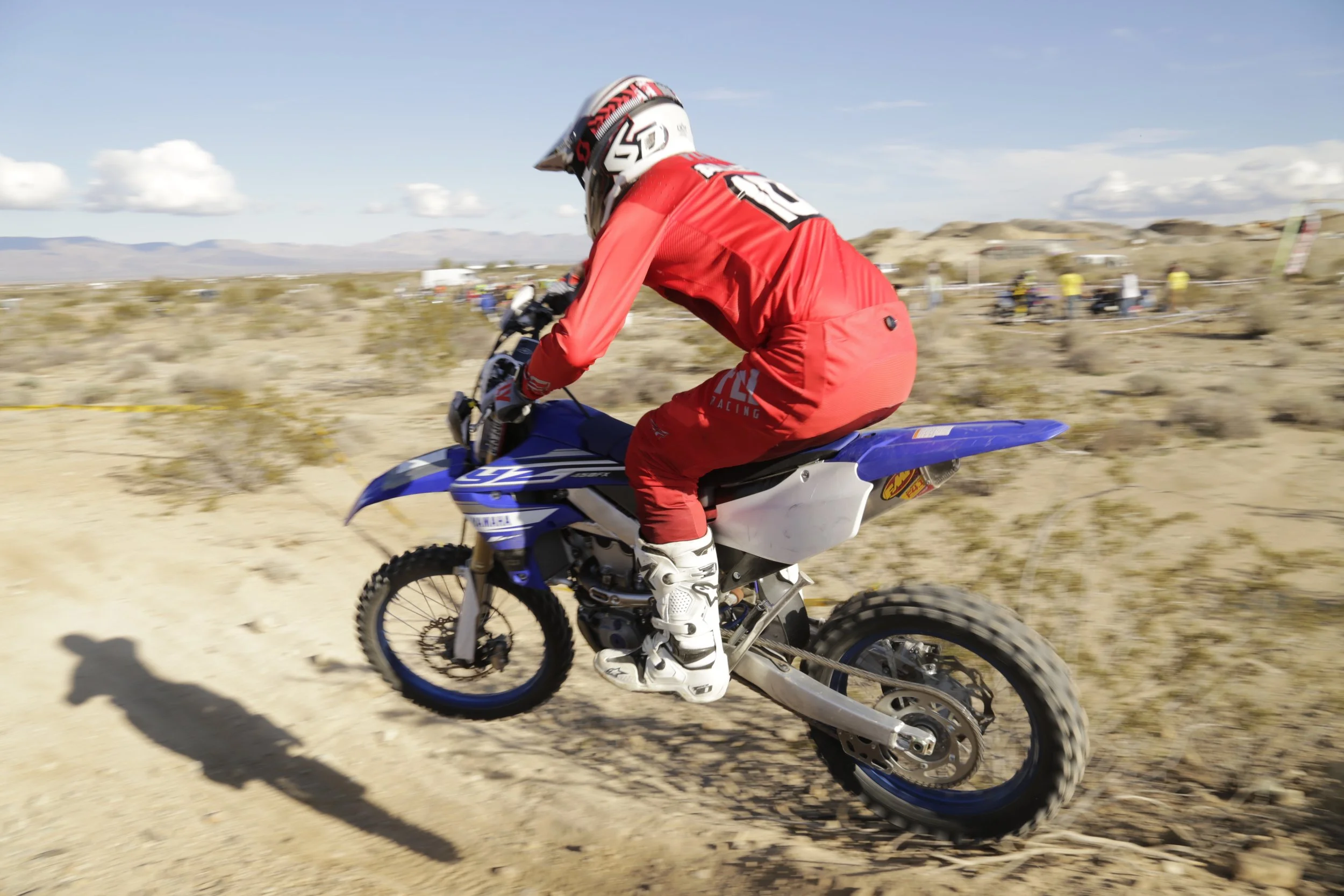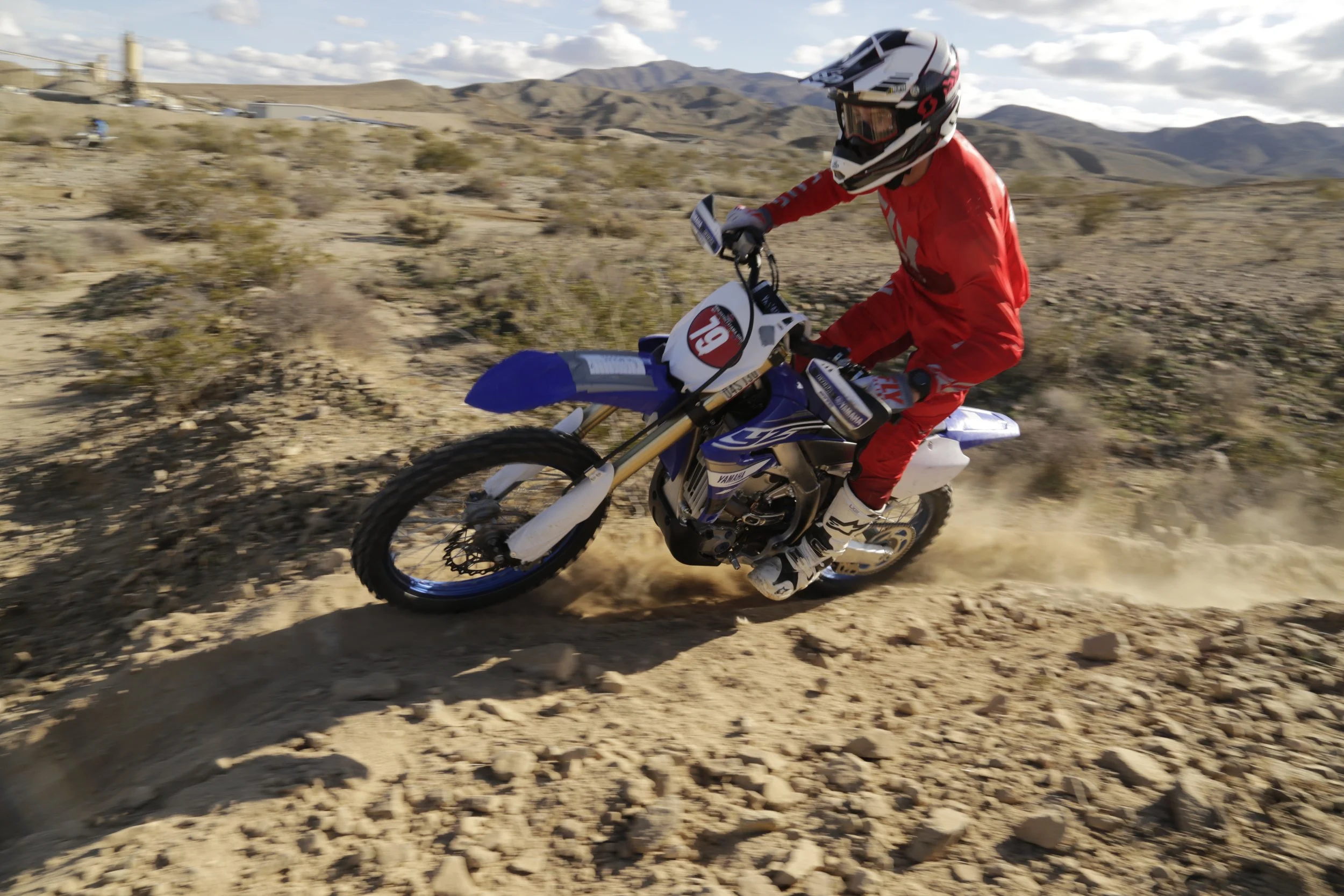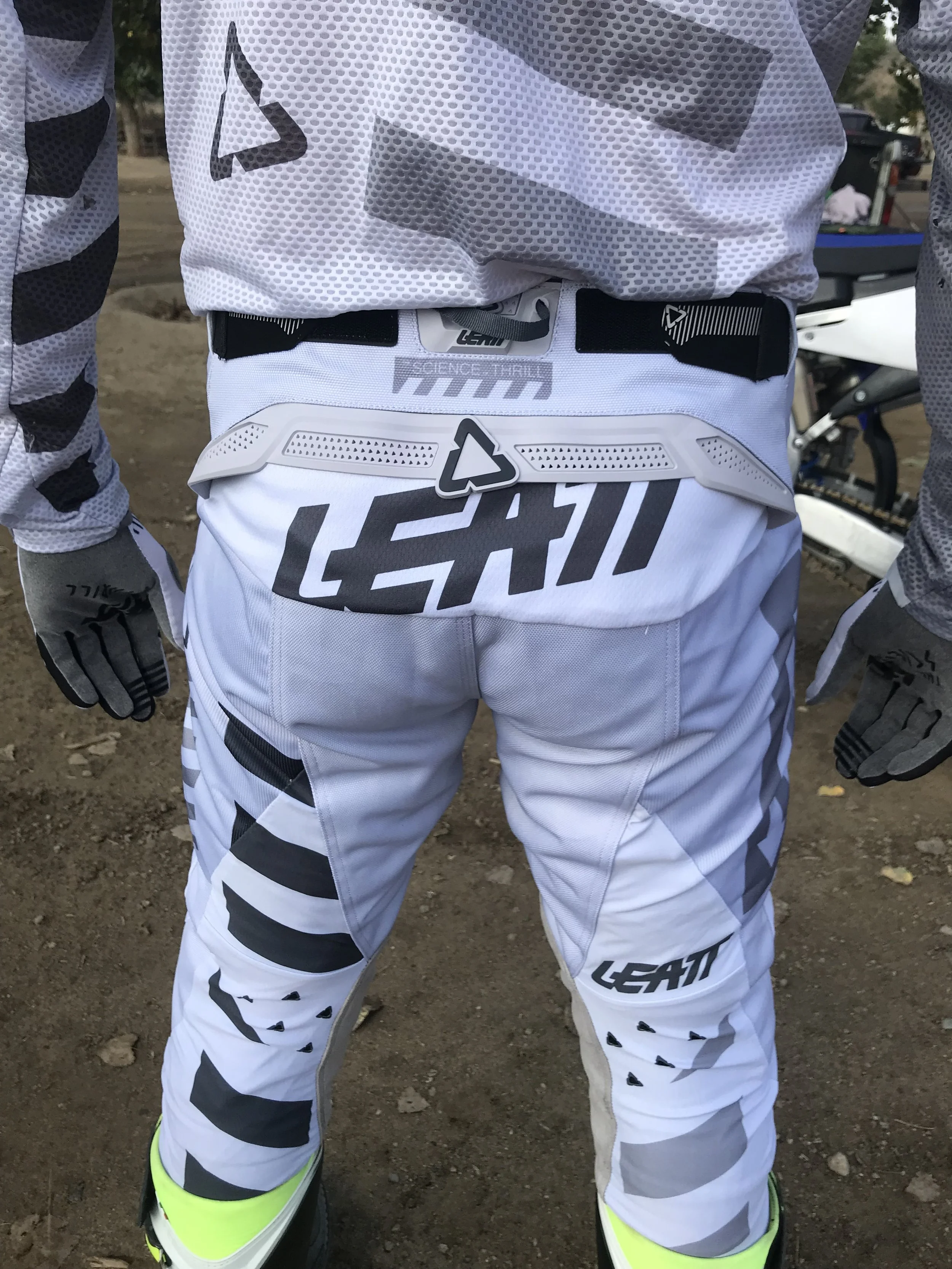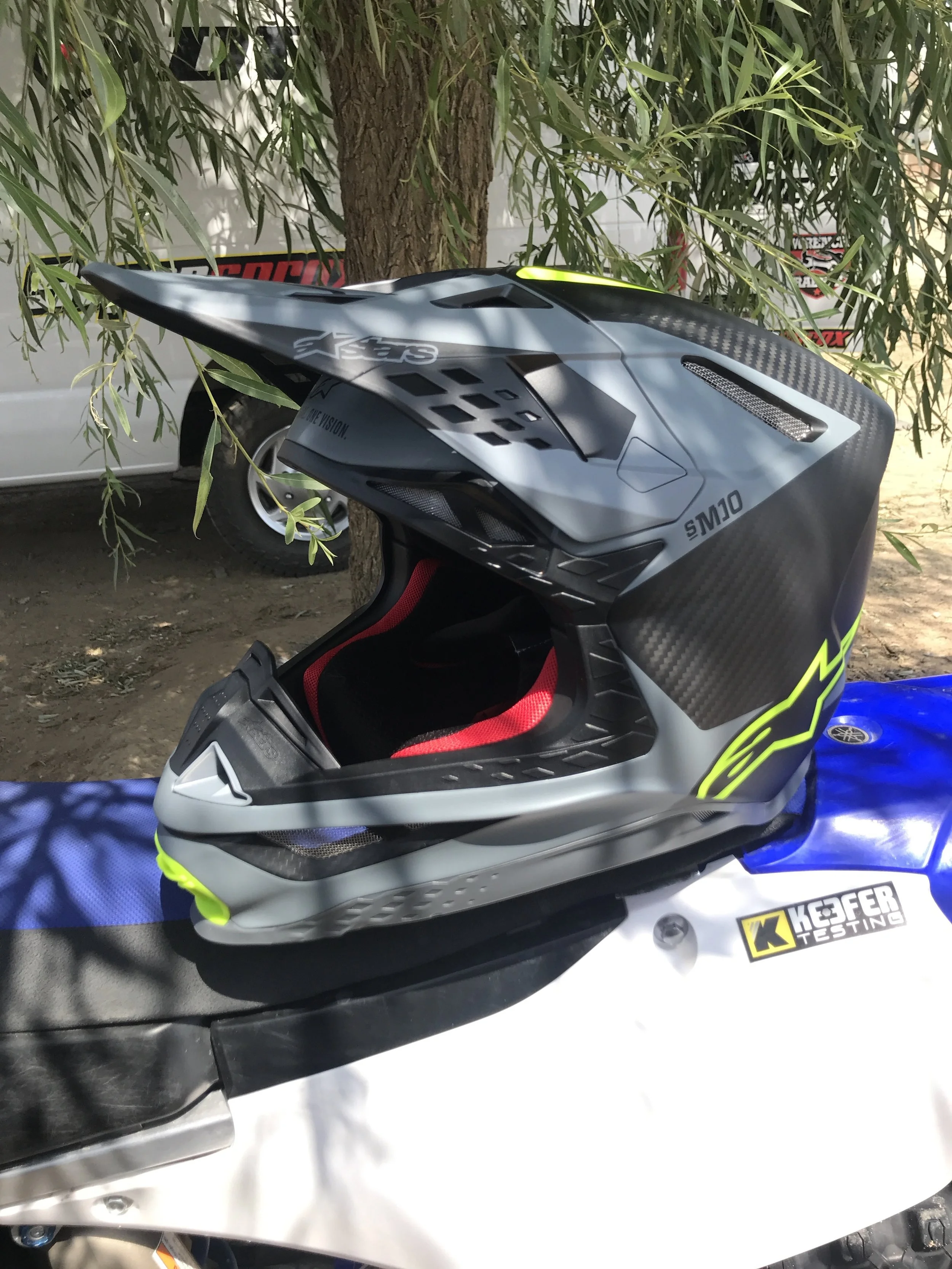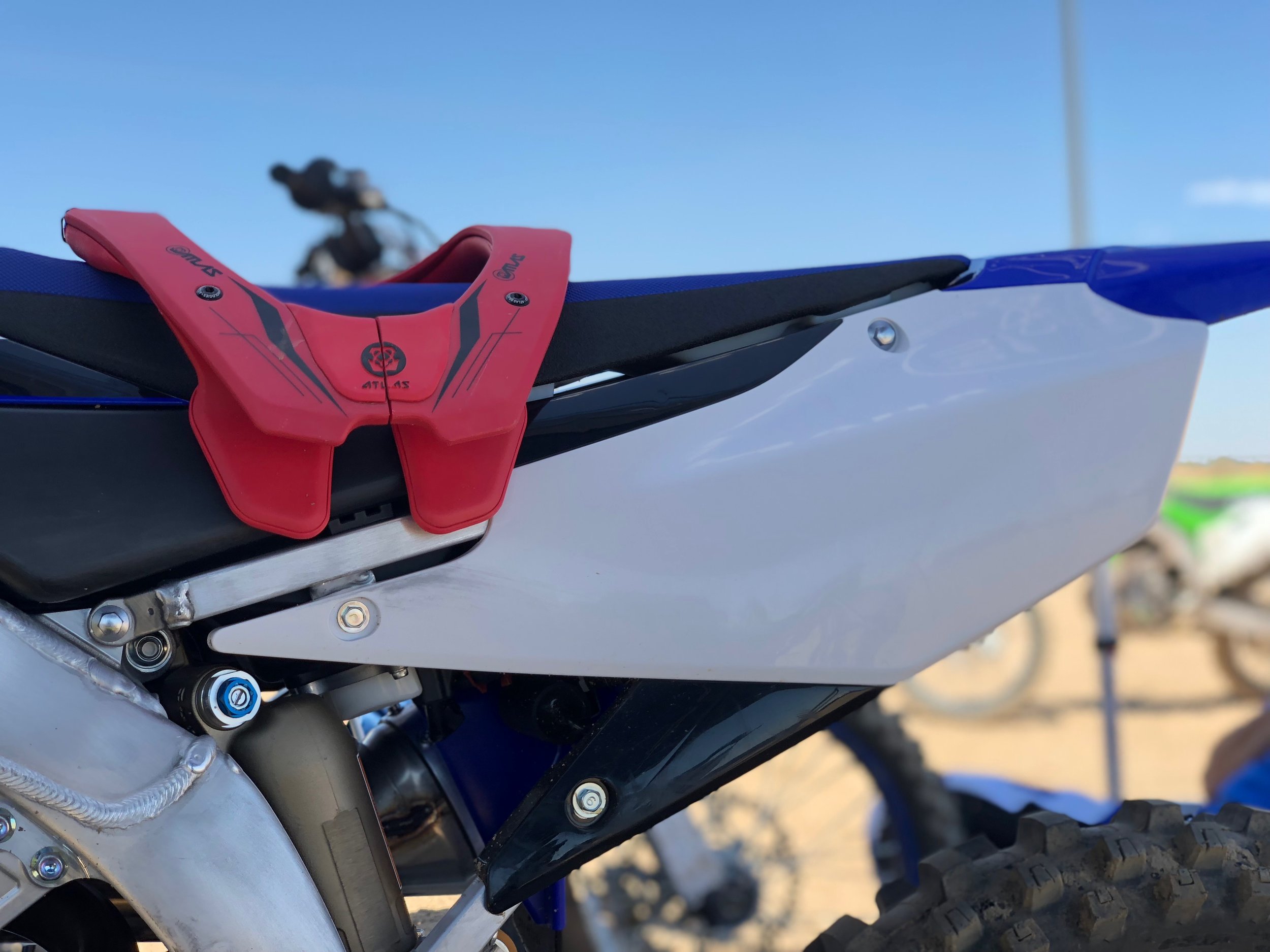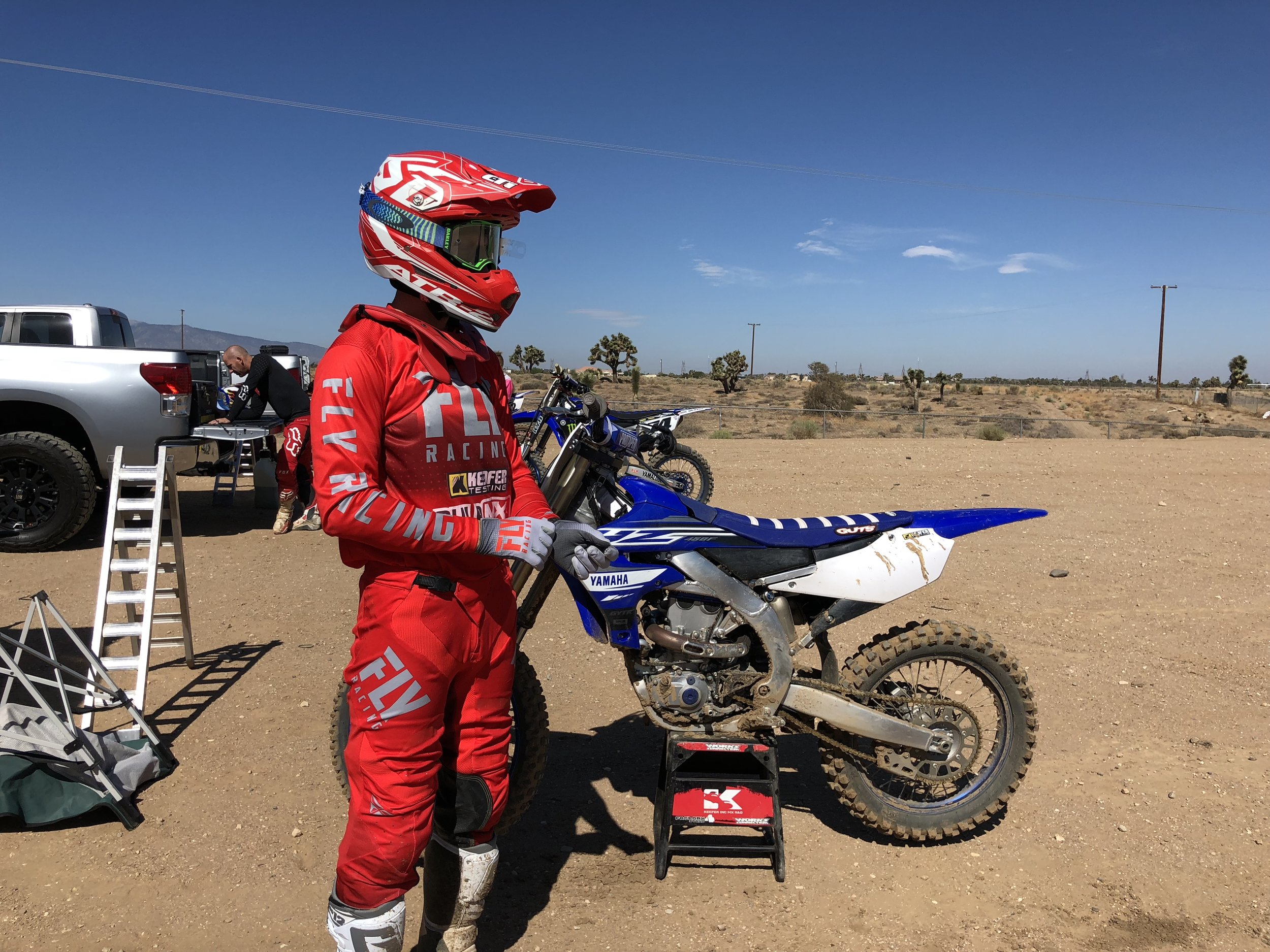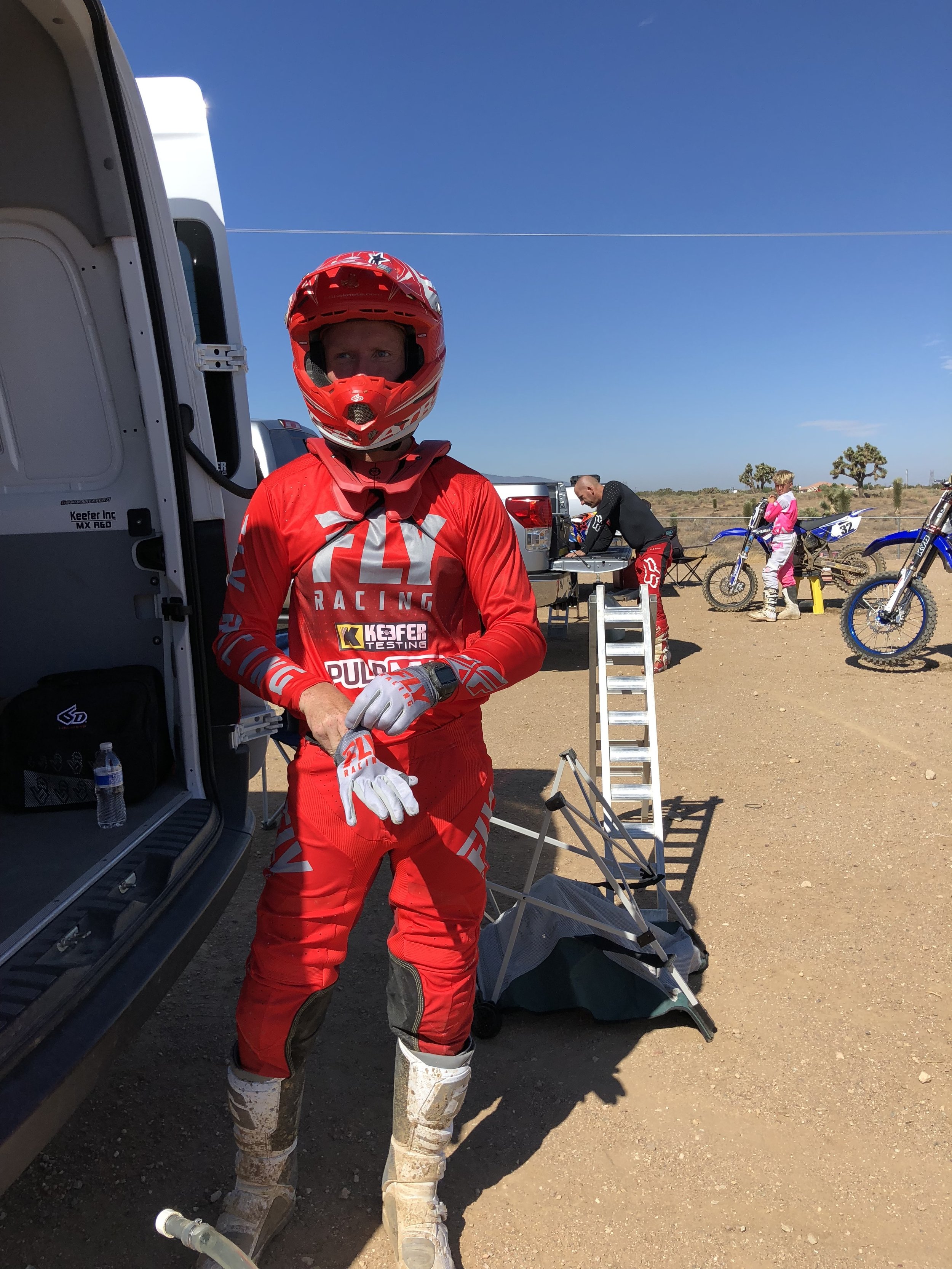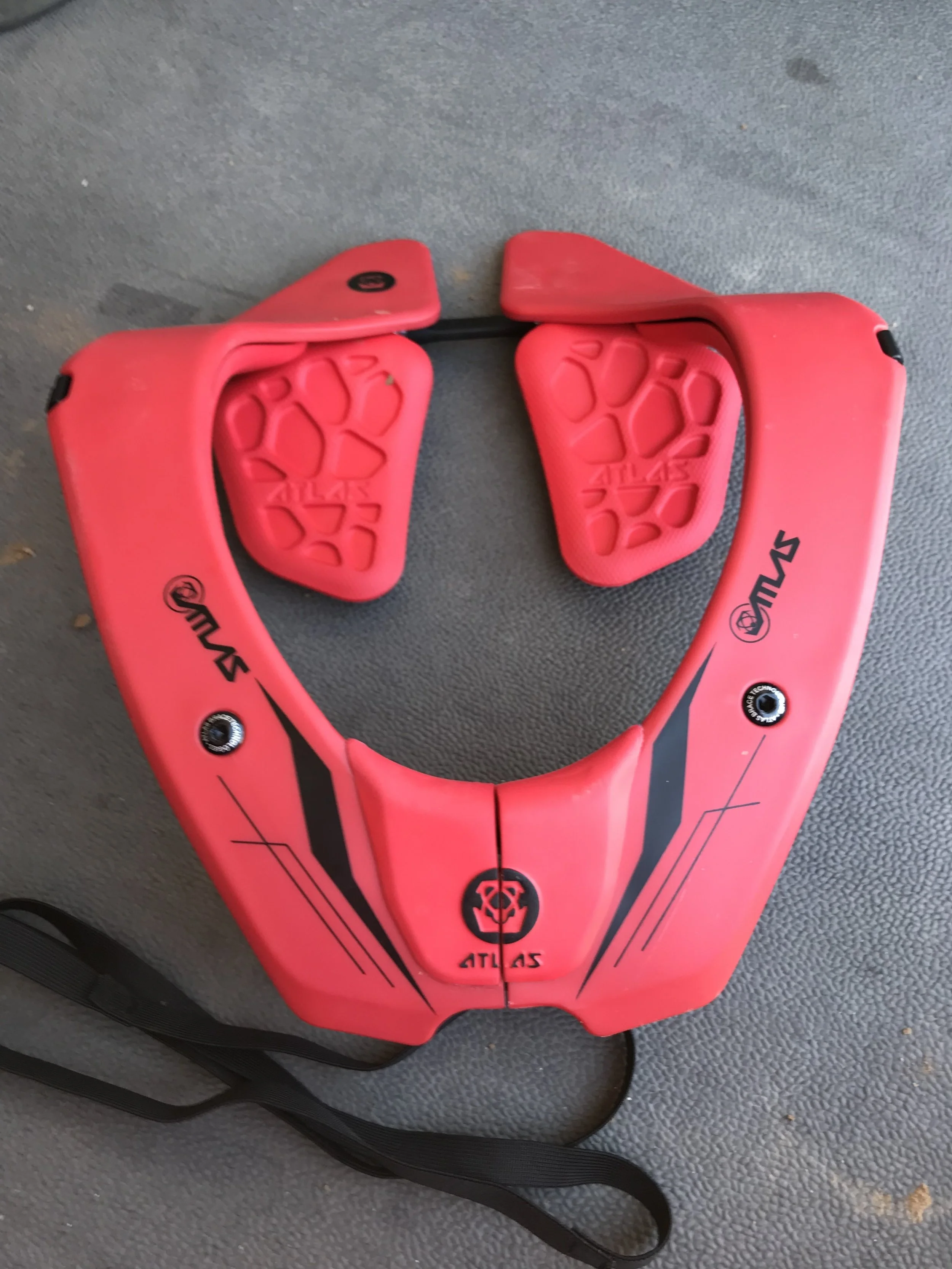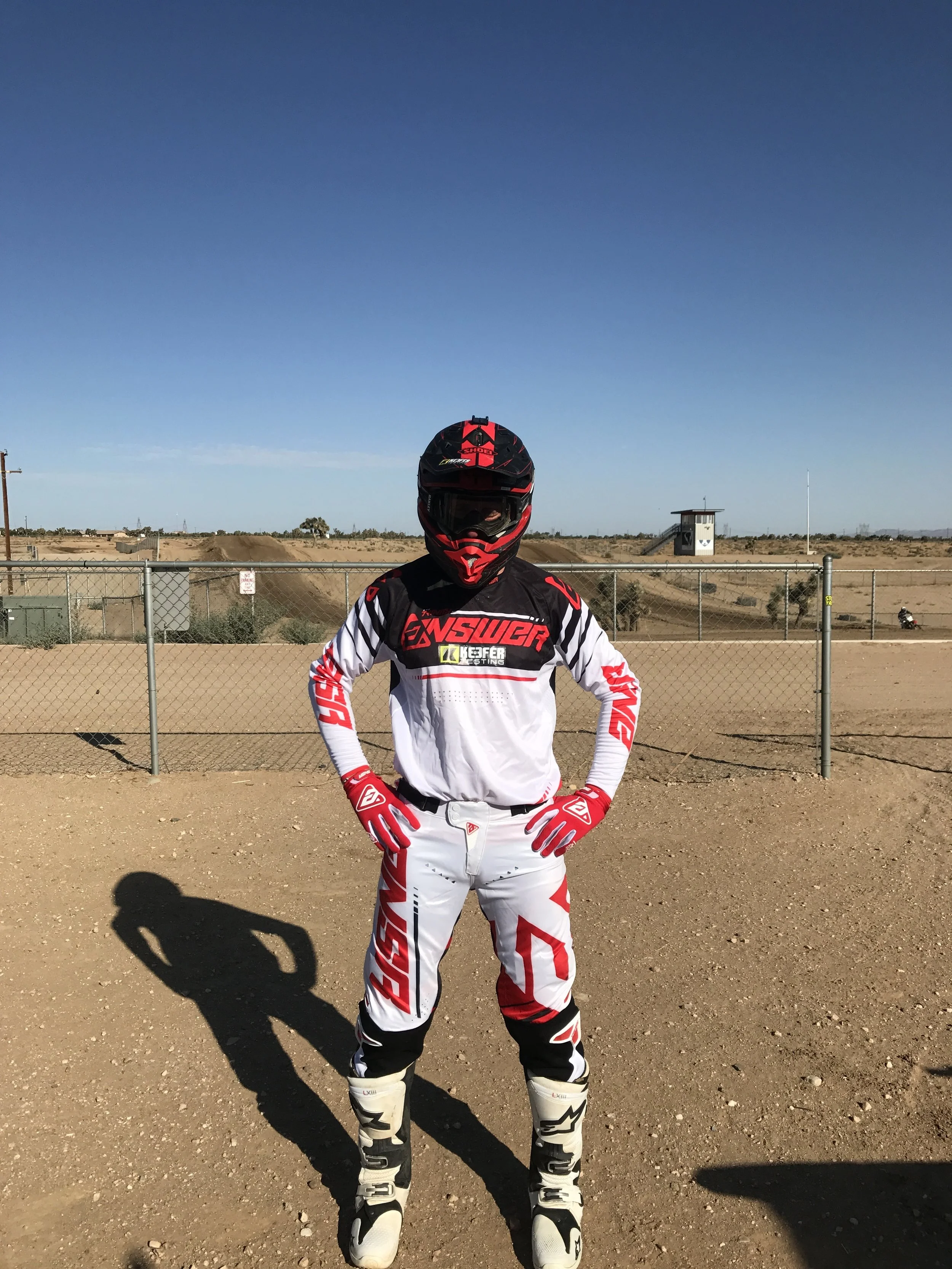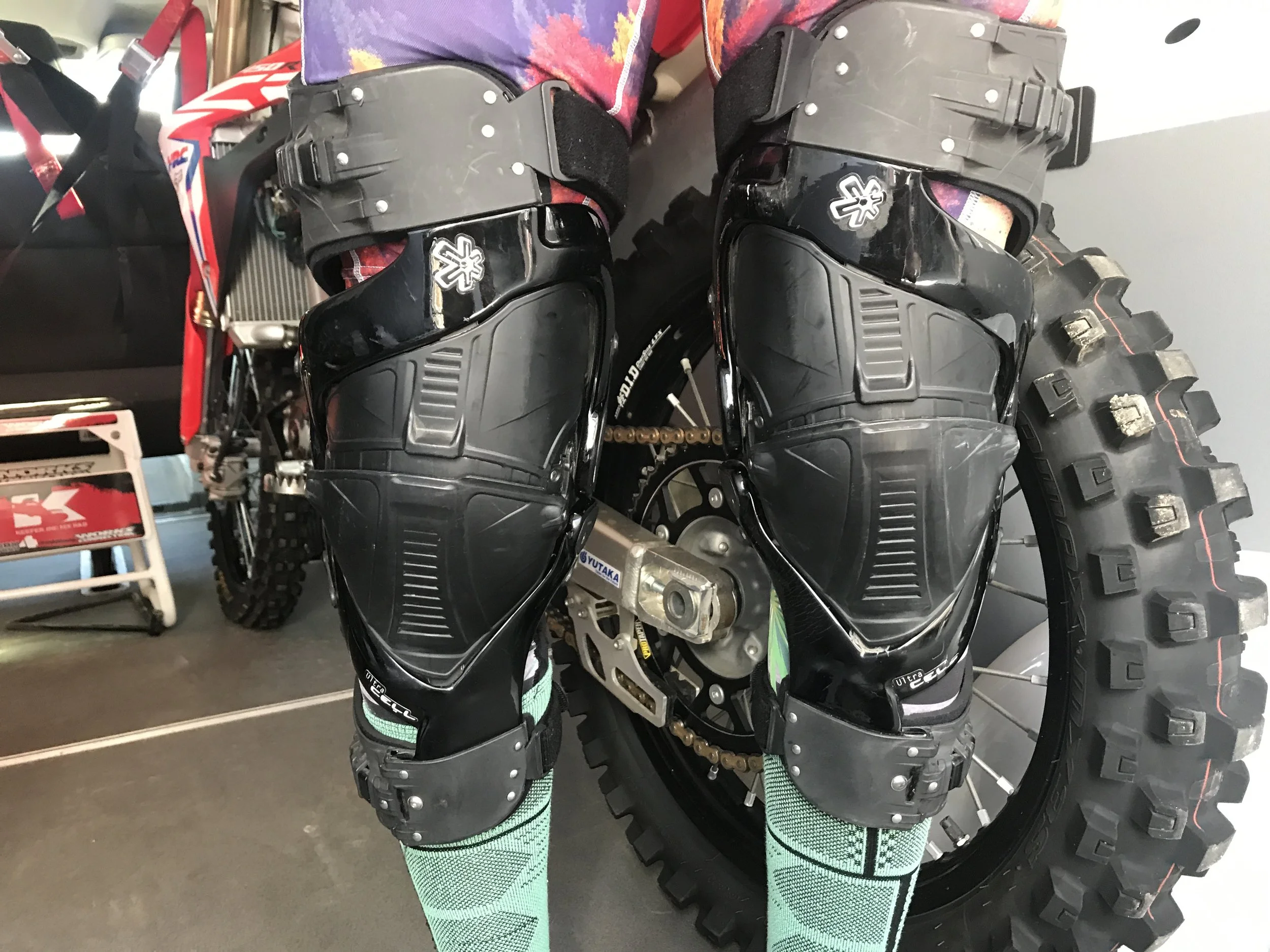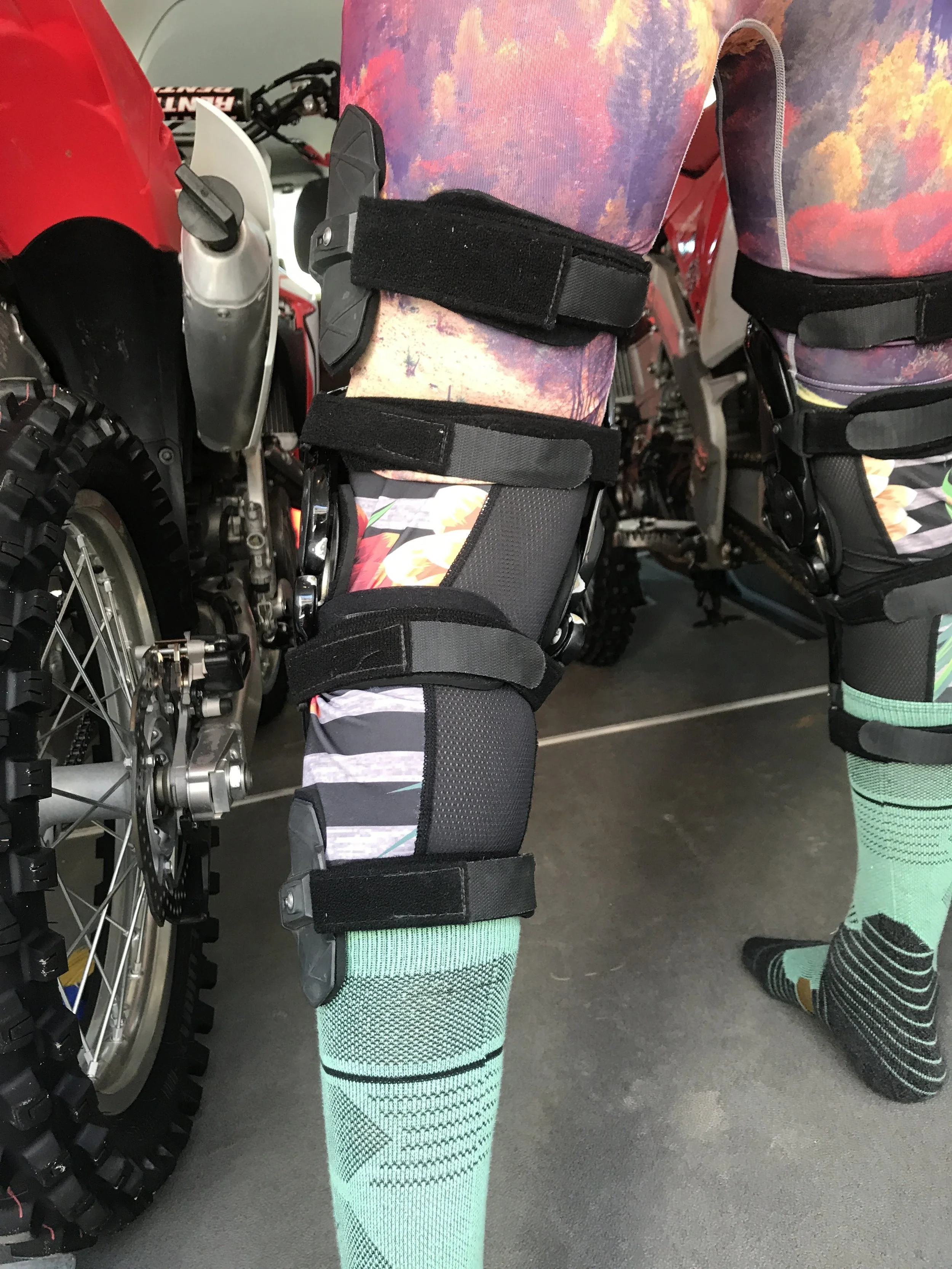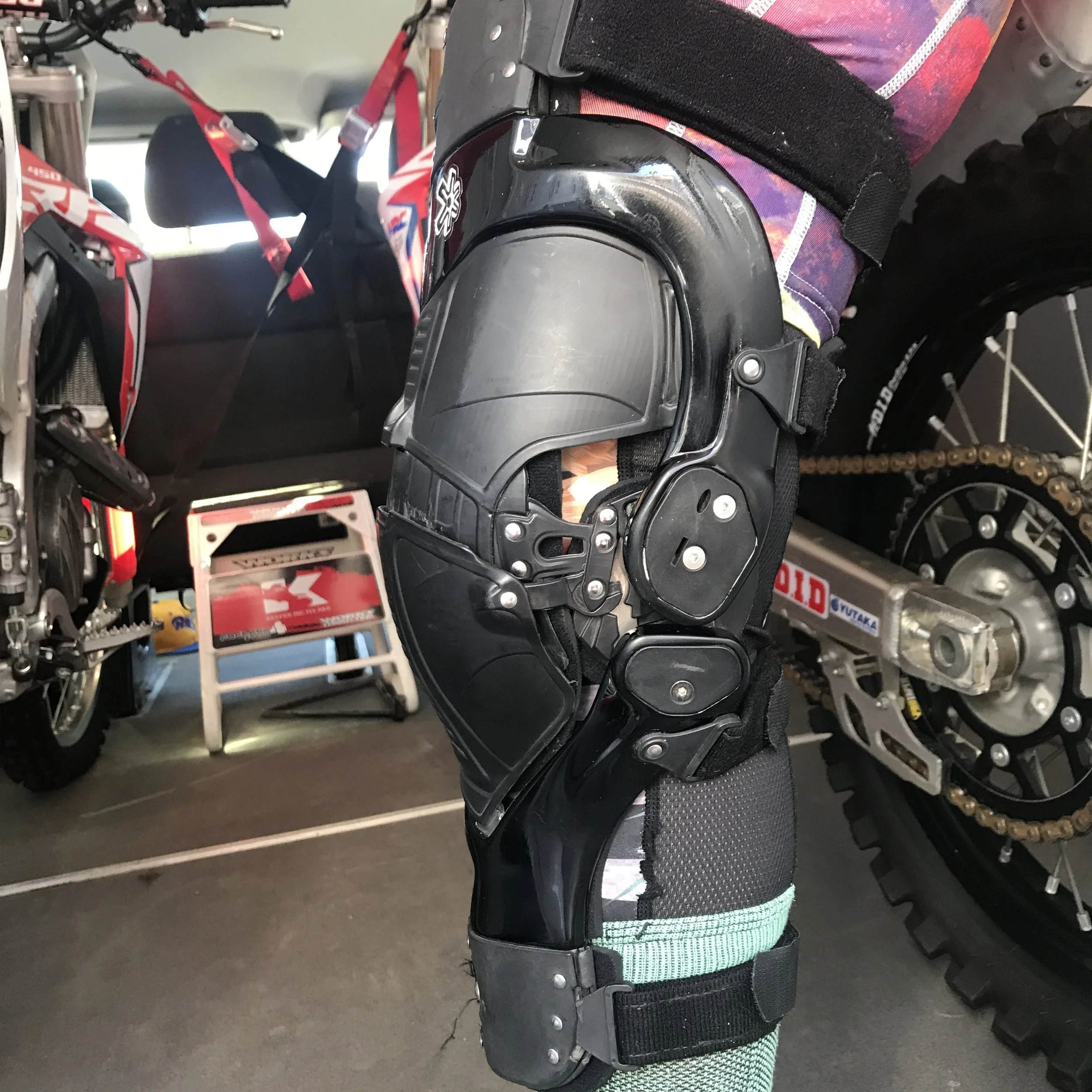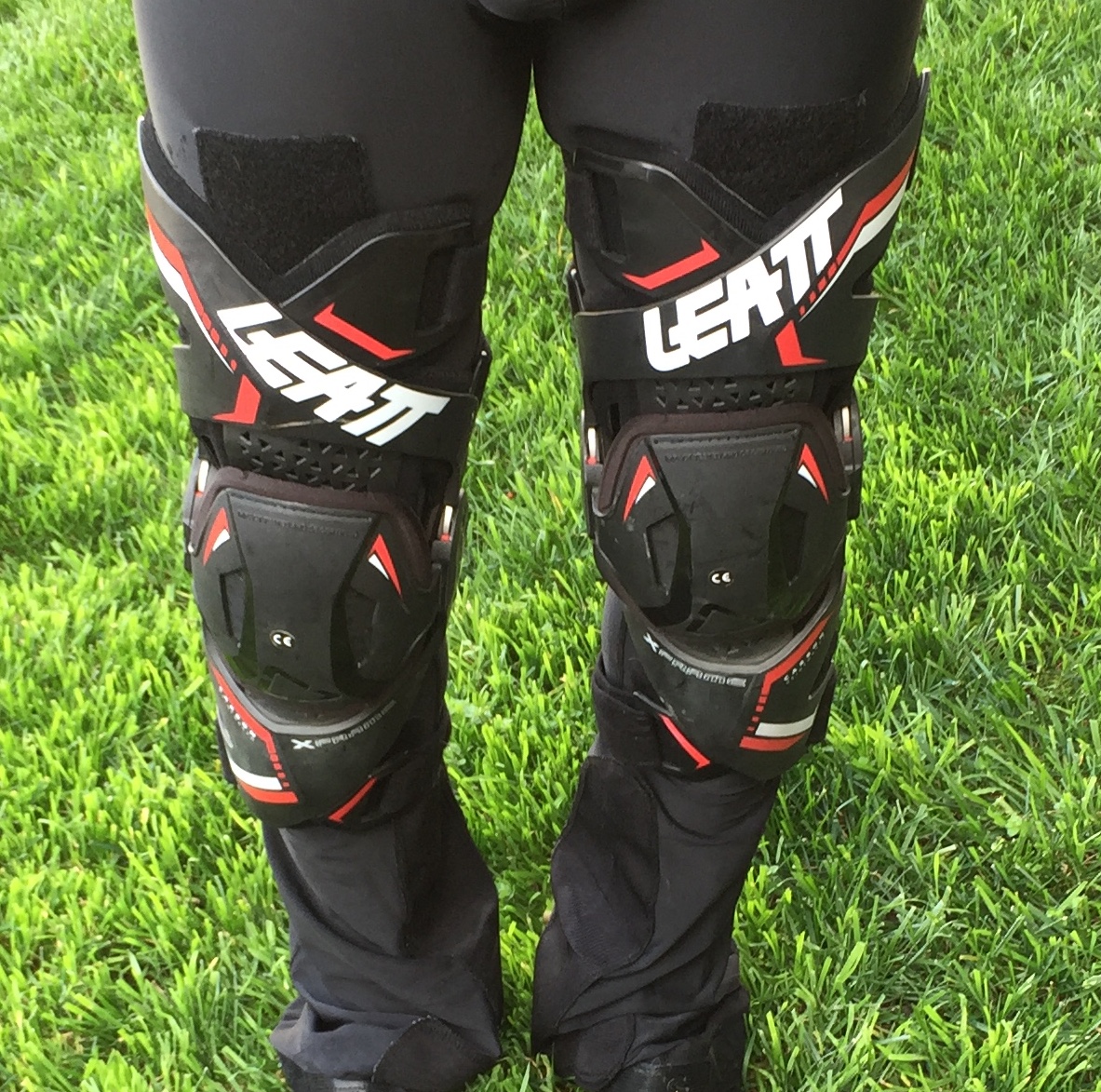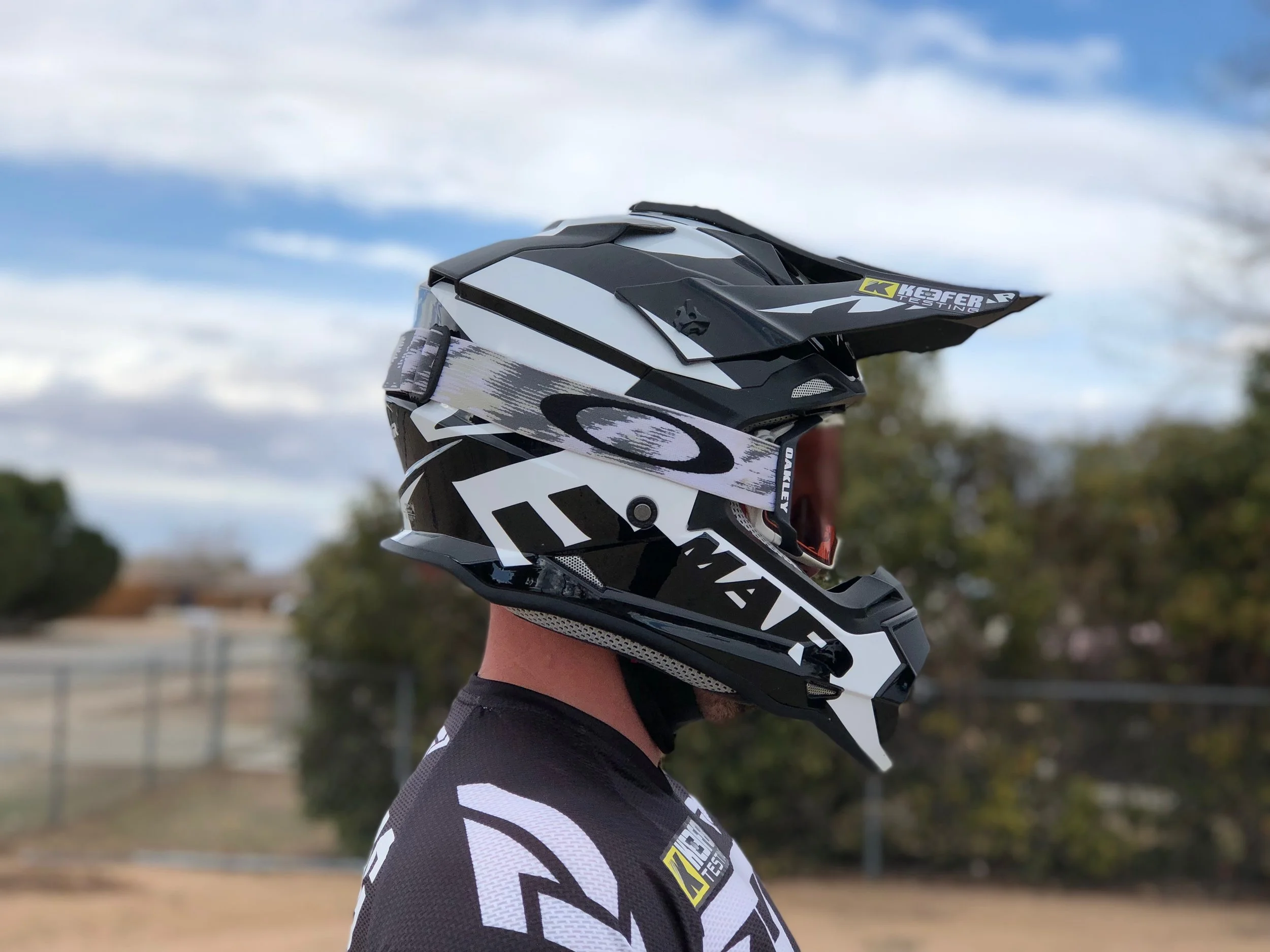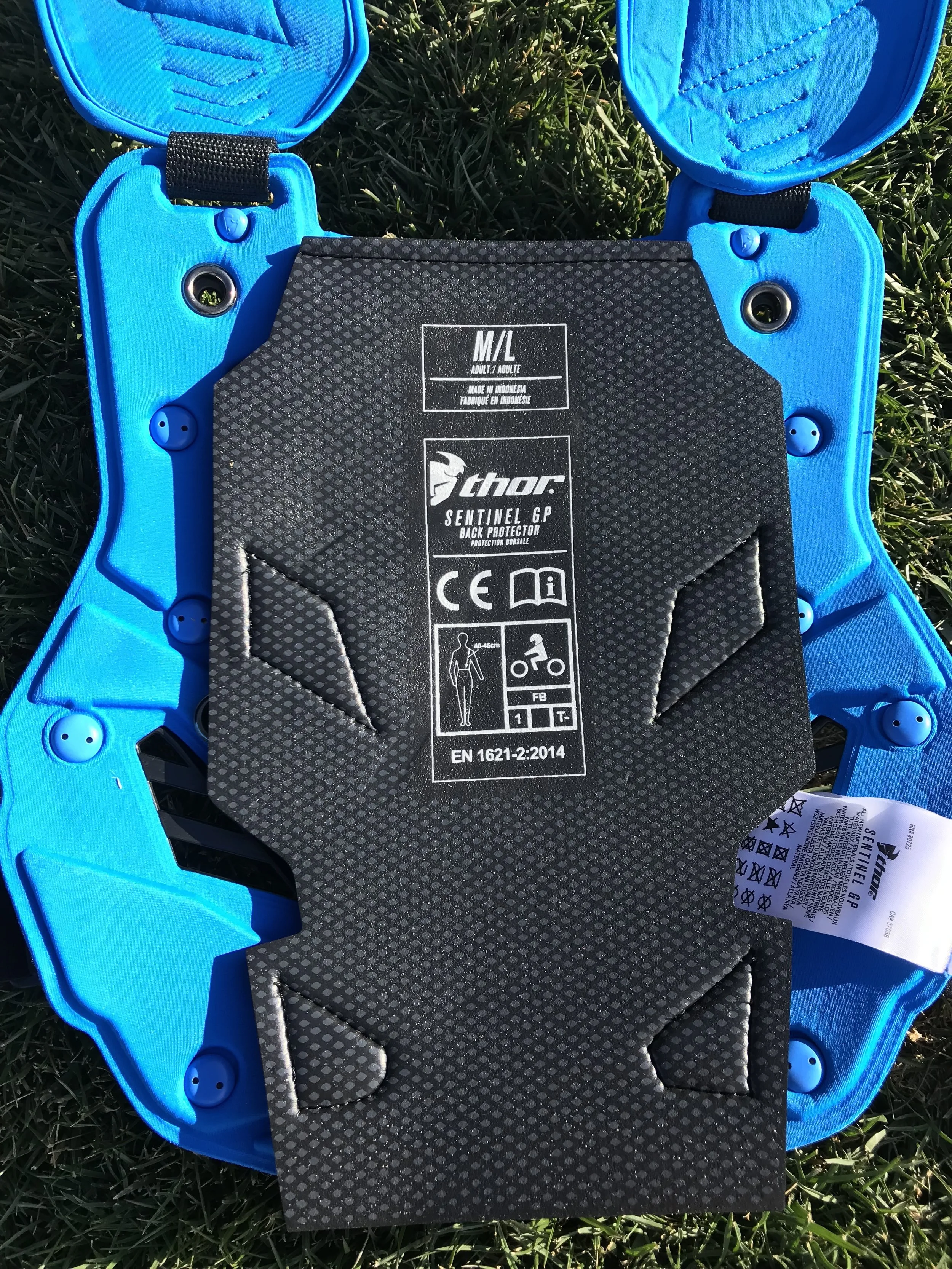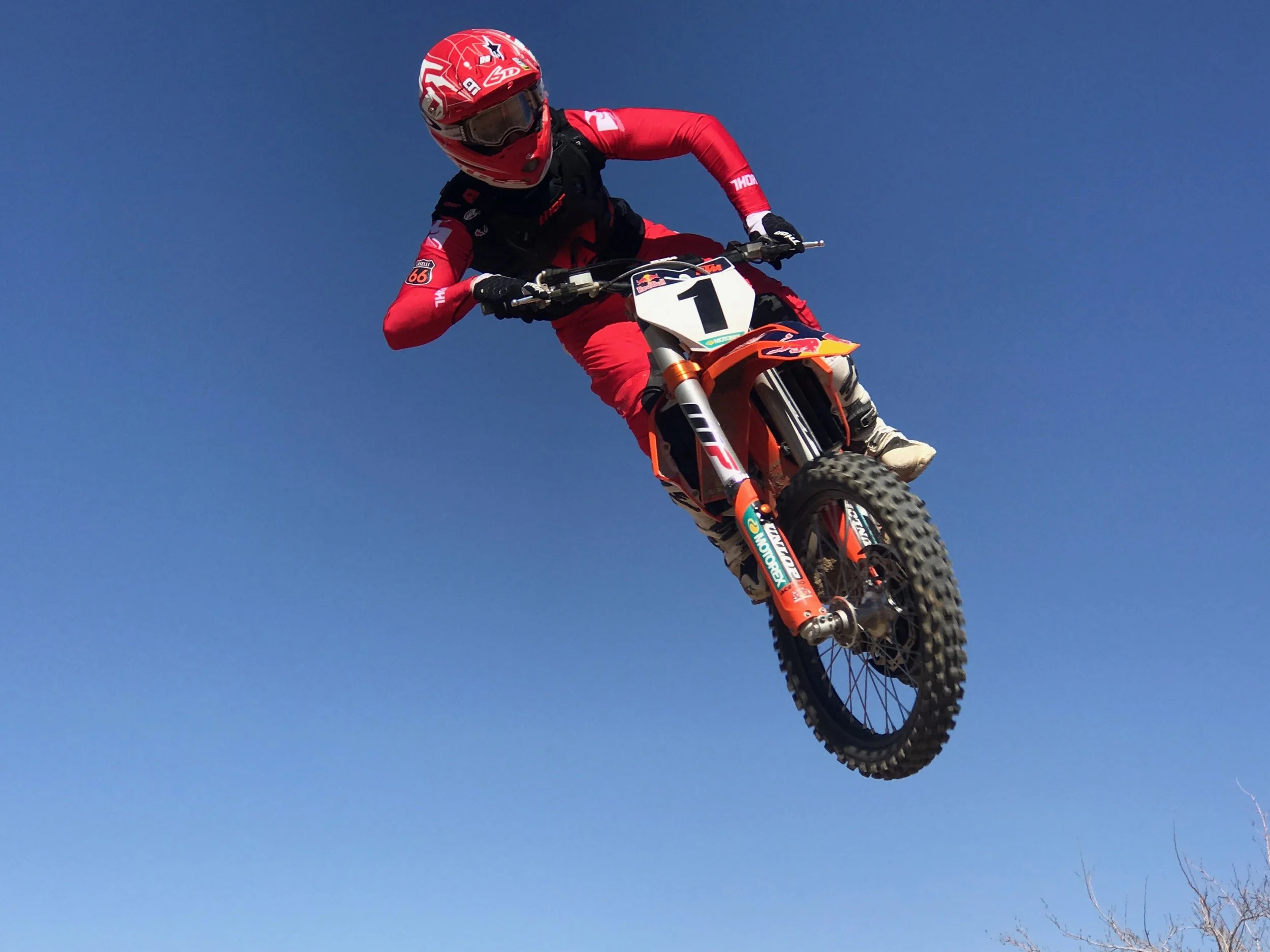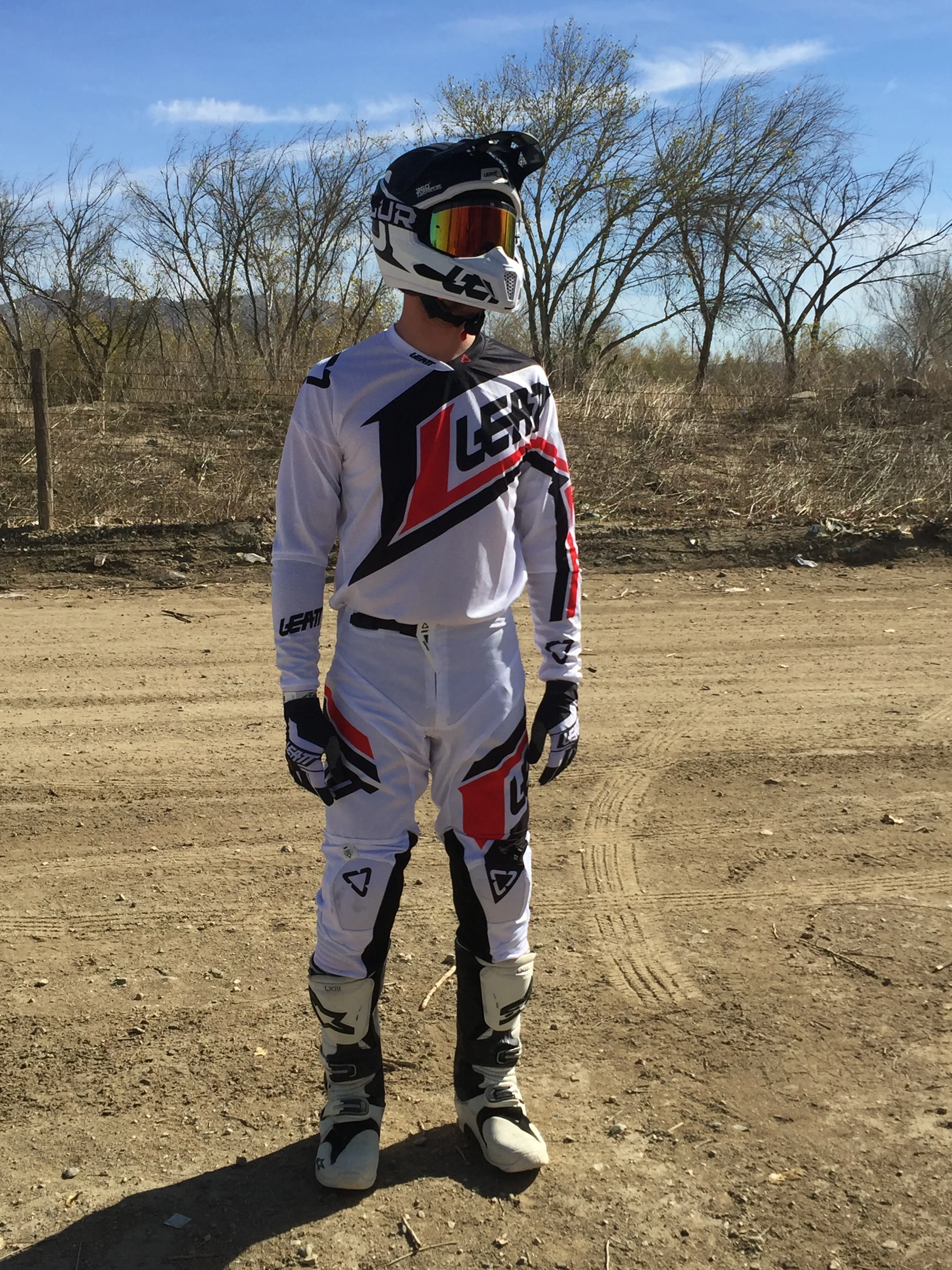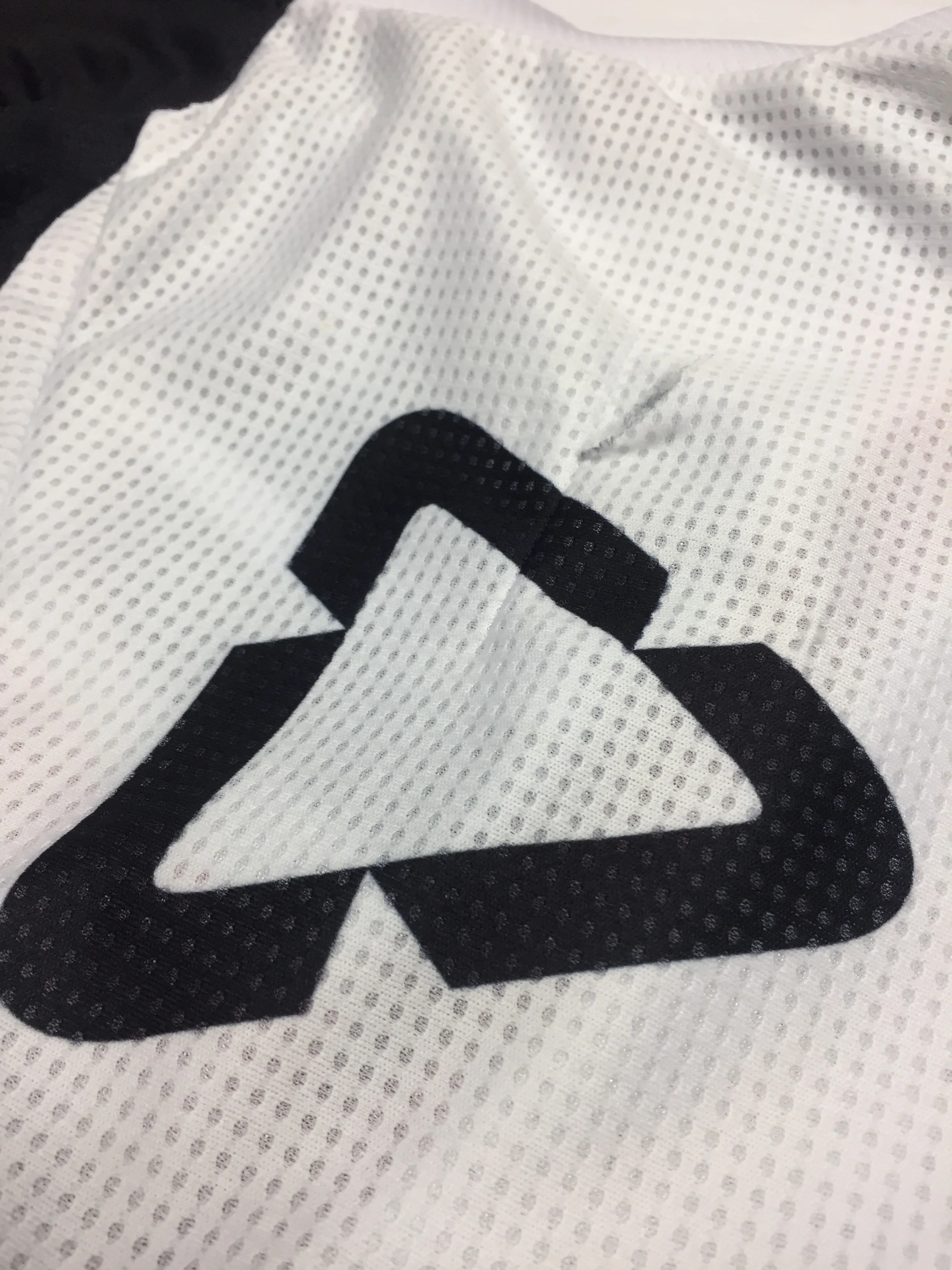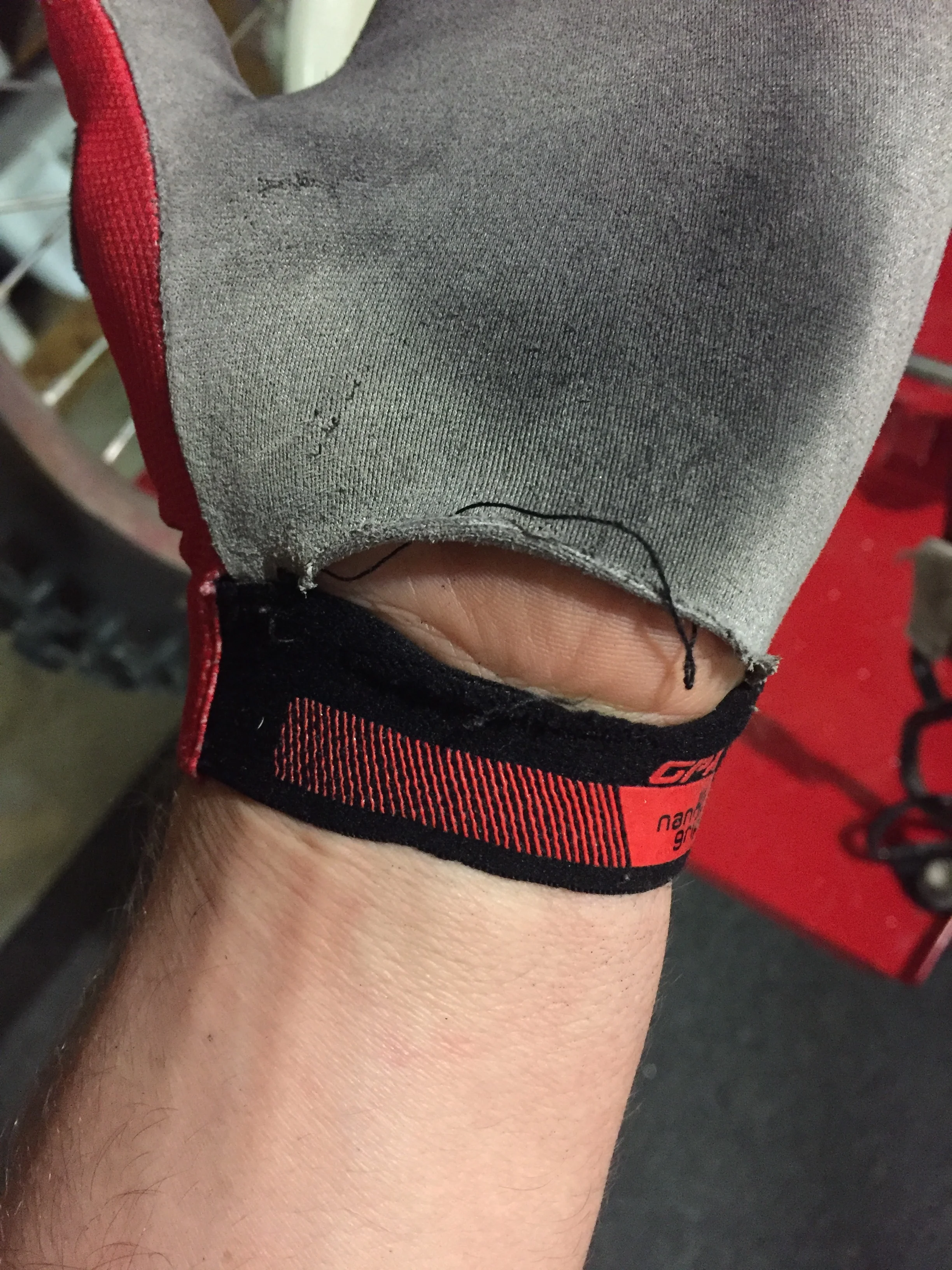I have been able to put enough time in the Bell Moto 10 helmet to give you a proper first impression, but before I do that, let me give you some background on my history of wearing Bell Helmets. Growing up in the high desert one of the perks is that I got to ride everyday after school from the house. Usually that meant getting off the bus, walking home, doing my chores/homework, and then immediately going to my favorite dez track to ride. After years of doing this, my mom had to witness me coming home with broken bones, a bloodied face, and the occasional missing skin, but what she didn’t see was a kid with a concussion. My dad was always adamant about putting me in Bell helmets when I was younger to keep me safe. I was raised in a Moto 3, 4, and 5 kid growing up because that is what my father believed in. Soon thereafter, when I had to spend my own money on helmets, I ventured out and tried other brands with some success, but I always remember my younger days in those Bell helmets.
Spherical Technology
Spherical Technology, powered by MIPS®, helps redirect impact forces, bringing market-leading design, performance and brain protection together without compromising comfort, ventilation, weight or style.
Ball-and-Socket Design
Spherical Technology’s ball-and-socket design helps redirect impact forces away from the brain by allowing the outer liner to rotate around the inner liner during a crash.
MIPS®-Equipped
MIPS stands for Multi-directional Impact Protection System, which is a leading slip-plane technology inside the helmet designed to reduce rotational forces that can result from certain impacts.
Segmented 3K Shell Technology
Special shell design that provides a large exhaust vent that expels hot air out of the helmet, ensuring the rider stays comfortable and cool.
No Missed Races Bumpers
Using a softer EPP material, two bumpers on either side of the helmet compress under load but bounce back to its original form, reducing the likelihood of further injury caused from the helmet contacting your body.
Panoramic Goggle Port Technology
A wider port provides better fitment, optimal sealing, and a massive field of view, increasing the rider’s visibility and safety when needed most.
Magnefusion Cheek Pad Emergency Release System
Allows for easy removal of the pads for washing and enables emergency responders to easily remove the cheekpads first before removing the helmet following an impact.
Sweat Management
With the combination of the T.E.A. System, Spherical venting channels, and Segmented shell, we created the ability to force perspiration across the rider’s brow—away from their goggles—preserving vision late in a race.
Virus CoolJade™ Comfort Liner
This removable, washable liner is made of recycled jade fabric to create a natural cooling effect. The ultra-wicking construction combined with CoolJade-infused yarn decreases your skin surface temperature up to 10˚ F, keeping you cool, comfortable, and focused on the race at hand.
Flying Bridge Visor
This visor design allows more flexibility and improves airflow across the helmet. By not using a traditional center post and screw concept, we’re able to increase the amount of energy-management material in a high-impact zone.
Thoughts:
So after spending a couple weeks riding in the new Moto 10, I am pleasantly surprised on how much more comfortable this helmet is for my head shape (I have more of a round head). Even though the weight of the helmets remains close to the same, the weight distribution of the Moto 10 feels evenly dispersed. The Moto 9 felt heavy directly on top of my head, but the Moto 10 feels much lighter when riding longer Motos. The Moto 10 fits snugger initially when riding with it brand new, but slowly breaks in and wraps around my face much more than the Moto 9 did. The way the helmet encompasses my head feels more secure and tighter in a good way (similar to an Arai VX-Pro 4). The liner/cheek pads have more comfort to them, are softer to the skin and overall just has more of a hug like feel that wraps around your cheeks (similar to a road racing helmet). The Moto 10 eye port now allows the rider to choose wide peripheral goggles as my Oakely Airbrake’s and 100% Armega’s seal much better to my face than they did with the Moto 9.
Ventilation is improved as the Moto 10 can cool your head down better than the Moto 9 on hotter days. Even though I assumed what Bell was explaining to the media about their ventilation system was just marketing BS, the Moto 10 actually can push sweat away from your goggles. I let one of my well known testers (that sweat profusely when riding) try the Moto 10 on a hot day at Glen Helen and he was blown away that his less than stellar goggle foam didn’t get soaked with sweat. (Editors Note: I am not much of a sweater, so that had to get put to the test by one of my guy’s). One of the other aspects that some other media outlets do not talk about is outside noise. Some helmets are louder than others, but the Bell is surprisingly quiet for how much ventilation it provides. Usually when I get a helmet that ventilates well, it is loud to the outside world, but the Moto 10 is in the top three helmets I have worn lately that muffles out bike noise.
If there is one negative that rolled over from the Moto 9 is that the chin bar area of the helmet is still close to my face/nose and when you wear certain goggles, the frames of those goggles damn near stick out passed the chin bar area of the helmet. It doesn’t hinder anything, but can look strange if you’re not used to it. Overall, my initial impression is that this Moto 10 is a much better Bell than the Moto 9. This is a helmet that I could actually live/want to ride with and with the updated tech along with the MIPS technology, I could actually believe/trust in its protection.
Positives:
• Quality – You’d expect an excellent quality of finish on a $800 helmet, and this thing delivers. With a carbon compose shell, it’s both lightweight (around 1300g) and strong. As an added nice touch, it comes in a cool padded carry bag.
• Style – Aside from the cool carbon finish, it’s a good-looking lid with a contoured shell shape.
• Comfort/Fit – The sophisticated impact liner and soft padding produces an exceptionally good fit. In fact, you can feel the liner actually mold to your head shape once you put it. In other words, it gives you a more personalized, form fitting helmet
• The Padded Liner – With its uncomplicated design (no tabs, just four plastic clip-studs), the liner is simple and easy to remove/replace. And in addition to being convenient, the magnetic cheek pads are a real advantage in the case of an emergency.
• Ventilation – This helmet flows Ari extremely well. The way it forces out sweat is something we have never felt before in a motocross helmet.
• Attention to Detail – The stainless steel mesh that’s used in the chin-piece and ventilation exhaust ports is stylish. I absolutely love the magnetic tip in the fastening strap. This makes it extremely easy to secure with gloves on. The built-in Eject Helmet Removal System cavity in the liner means there’s no need for any modifications to fit this system (which is now mandatory for racing in many countries).
Negatives:
• Visor Screws – They have an inventive design (they’re recessed, designed with breakaway tabs, flick out to use and then back to flush), but with only two lateral screws, you have to run them super-tight to keep the visor fixed in place. The visor will not move when riding, but getting the visor to a correct position (before riding) without looking like you have dune goon syndrome is tough to do.
• The Chin-Bar – The shell’s compact design puts the chin-piece close to your mouth, this can accelerate goggle fogging in wet/cold conditions if you start to breathe heavily. Removing the nose guard helps this however. I would prefer a slightly longer chin bar area however.


